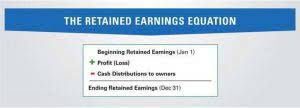
These costs include raw materials, labor, and any other direct expenses that are incurred in the production process. Because absorption costing includes fixed overhead costs in the cost of its products, it is unfavorable compared with variable costing when management is making internal incremental pricing decisions. This is because variable costing will only include the extra costs of producing the next incremental unit of a product. Indirect costs are those costs that cannot be directly traced to a specific product or service.
Just-In-Time: History, Objective, Productions, and Purchasing
In simple terms, “absorption costing” refers to adding up all the costs of the production process and then allocating them to the products individually. This method of costing is essential as per the accounting standards to produce an inventory valuation captured in an organization’s balance sheet. It is to be noted that selling and administrative costs (both fixed and variable) are recurring and, as such, are expensed in the period they occurred. However, these costs are not included in the calculation of product cost per the AC.
Margin Size
Once you complete the allocation of these costs, you will know where to put these costs in the Income Statements. Since this method is widely used by many manufacturing companies, it is necessary yo know the advantages and disadvantages of the same. Overhead Absorption is achieved by means of a predetermined overhead abortion rate. Therefore they have to be distributed to cost centers on some sharing basic like floor areas, machine hours, number of staff, etc. Therefore, it is necessary to analyse and evaluate the pros and cons of the process and then decide whether it is suitable for the business.
Disadvantages of variable cost methods

Based on what happens to the product, it will be considered under the inventory calculation or considered under sales revenue and profit calculation. Variable overhead costs directly relating to individual cost centers such as supervision and indirect materials. You need to allocate all of this variable overhead cost to the cost center that is directly involved.

When we prepare theincome statement, we will use the multi-step online bookkeeping income statementformat. The absorption cost per unit is $7 ($5 labor and materials + $2 fixed overhead costs). As 8,000 widgets were sold, the total cost of goods sold is $56,000 ($7 total cost per unit × 8,000 widgets sold). The ending inventory will include $14,000 worth of widgets ($7 total cost per unit × 2,000 widgets still in ending inventory). Next, we can use the product cost per unit tocreate the absorption income statement.

Maybe calculating the Production Overhead Cost is the most difficult part of the absorption costing method. The following is the step-by-step calculation and explanation of absorbed overhead in applying to Absorption Costing. Absorption costing is typically used in situations where a company wants to understand the full cost of producing a product or providing a service. This includes cases where a company is required to report its financial results to external stakeholders, such as shareholders or regulatory agencies. Since this method shows lower product costs than the pricing offered in the contract, the order should be accepted. Absorption costing means that ending inventory on the balance sheet is higher, while expenses on the income statement are lower.
The company management should use it with diligence and responsibility so as not to create any negative effect in the Bookkeeping for Painters decision making process.
What’s the Difference Between Variable Costing and Absorption Costing?
- The ending inventory will include $14,000 worth of widgets ($7 total cost per unit × 2,000 widgets still in ending inventory).
- This is a costing method that considers only variable manufacturing costs (material, labor and indirect) as the costs of the inventoried product.
- You can calculate a cost per unit by taking thetotal product costs / total units PRODUCED.
- Those costs include direct costs, variable overhead costs, and fixed overhead costs.
- The company management should use it with diligence and responsibility so as not to create any negative effect in the decision making process.
- Once you complete the allocation of these costs, you will know where to put these costs in the Income Statements.
Because fixed costs are spread across all units manufactured, the unit fixed cost will decrease as more items are produced. Therefore, as production increases, net income naturally rises, because the fixed-cost portion of the cost of goods sold will decrease. Costing by absorption and variable costing are costing methods that address the treatment of fixed costs when performing product valuation. In this article, we will look at the concepts of absorption costing and unit product cost. The term absorption costing refers to the method in which the entire production cost is allocated to each and every output proportionately. It is a very common method used widely in the business especially in the manufacturing sector, and in this way the company is able to determine the cost of individual product and services.

Absorption Costing Vs Variable Costing
Absorption costing is a method of costing that includes all manufacturing costs, both fixed and variable, in the cost of a product. Absorption costing is used to determine the cost of goods sold and ending inventory balances on the income statement and balance sheet, respectively. It is absorption costing also used to calculate the profit margin on each unit of product and to determine the selling price of the product. Absorption costing is linking all production costs to the cost unit to calculate a full cost per unit of inventories. This costing method treats all production costs as costs of the product regardless of fixed cost or variance cost.

